Mastering Points of Sail for Surf Enthusiasts
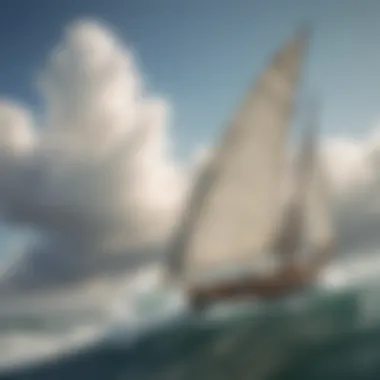
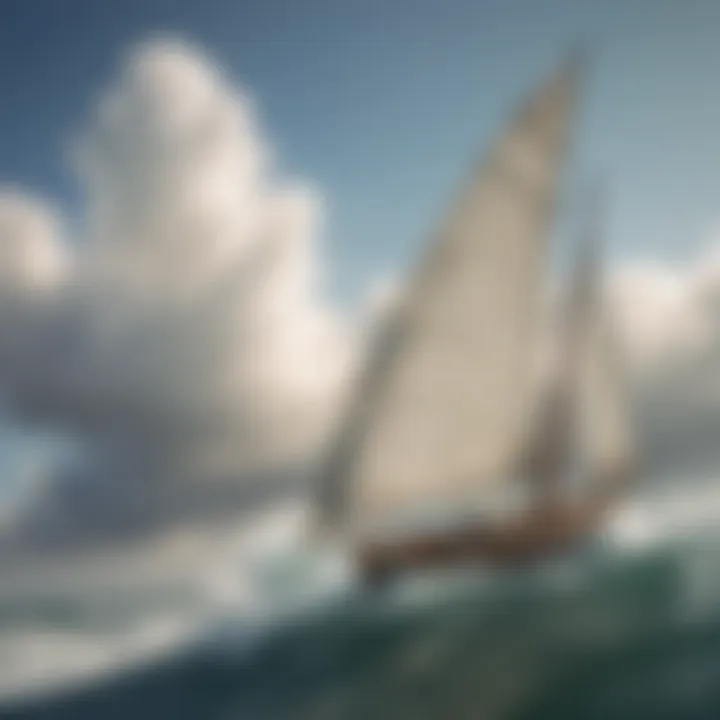
Intro
When the sun kisses the ocean waves and the thrill of riding them beckons, a surfer's journey is often guided by the winds. What might seem like mere fun in the surf harbors a wealth of technical insights, particularly when we talk about points of sail. Understanding this concept can significantly affect how a surfer interacts with the waves, offering an edge in performance and navigation. For surfers, being in tune with the wind and waves isn’t just beneficial; it’s essential.
This article aims to navigate the intricate relationship between sail orientation and surfing performance. By diving deep into different points of sail, we can explore how each orientation impacts both maneuverability and stability on the water. Additionally, practical techniques will be discussed to aid surfers at any level, from the novice just dipping their toes in, to the seasoned wave warrior hunting big swells.
There’s much to unpack, so let’s set the sails and plunge into the particulars of surfboard reviews, essential riding techniques, and how all those pieces fit together to enhance your surf experience.
Prelude to Points of Sail
Navigating the expansive ocean can feel both thrilling and daunting, especially for surfers who rely on their understanding of the wind and water. Recognizing the concept of "points of sail" is crucial, as it's essentially the relationship between the wind direction, the sail's orientation, and the resulting movement on the water. This understanding not only influences how swiftly one can glide through waves but also how efficiently a surfer can harness the natural forces around them.
Definition and Importance
At its core, points of sail refers to the angles a vessel—be it a sailboat or a surfboard relative to the wind direction. This knowledge is not merely academic; it's the bedrock of effective navigation. A surfer knowledgeable in these concepts will find themselves better equipped to tackle different conditions and maximize their performance.
For instance, surfing on a close-hauled point means adapting to a sharp wind angle, allowing the surfer to slice through waves more effectively. Failing to grasp these angles can lead to mishaps, such as being overpowered by gusts or missing prime wave opportunities. Thus, knowing how to adjust one's position relative to the wind can greatly enhance safety and control on the water.
Relevance to Surfboarding
A surfer's experience is inextricably linked to their grasp of points of sail. While surfing might seem like an art form solely based on skill and balance, it's deeply grounded in the science of movement and flow. The strategic utilization of wind can either make or break a surfing experience.
For example, when you're surfing during a windy day, understanding how to angle your board against the wind can lead to smoother rides and more controlled turns. Surfers need to balance their positioning in relation to wind direction; being too off-line can result in a loss of momentum or, worse yet, a tumble into the surf.
In summary, the concepts of points of sail offer essential insights that can elevate a surfer's effectiveness on the water. Mastery of these principles transforms casual surfers into savvy navigators who know how to catch the best waves.
"To ride the wave is to gage the wind."
By understanding the intricacies of sail orientation and its impacts on routines in the water, surfers can unlock a new level of performance—turning the wind into an ally rather than an adversary.
Basic Concepts of Sailing
Sailing, at its core, is more than just a means of transportation on water; it's an intricate dance between the wind and the water that requires nuance, skill, and a sharp understanding of your surroundings. When it comes to surfing, the relationship surf enthusiasts have with the elements is even more immediate, making the basic concepts of sailing crucial to mastering points of sail in the context of wave riding. Knowing how to manipulate sails, how different wind conditions can change the dynamics of your ride, and how to adjust your approach based on these factors can truly elevate one’s performance.
Understanding Wind Dynamics
Wind is the invisible hand that guides a sailboat, and for surfers, understanding wind dynamics can be the difference between a smooth ride and a tumultuous tumble. The wind will shift directions and vary in intensity; grasping how to read these changes allows surfers to position themselves correctly in the waves, maximizing speed and control.
While navigating, identify wind patterns, as they often indicate conditions on the water. When the wind is blowing parallel to the shore, it can create a more favorable situation for catching waves. In contrast, an onshore wind may create choppy conditions, which, at best, can make for a bumpy ride.
Why does this matter? Well, much like a sailor adjusts their sails to catch the wind, a surfer must constantly adapt to shifting conditions. Here are a few considerations:
- Wind Speed: Understanding how fast the wind is blowing aids in predicting wave behavior.
- Wind Direction: The angle at which the wind strikes the waves can dictate their size and power.
- Local Effects: Coastal features like reefs and jetties can influence how wind interacts with the surf.
Knowing these elements allows surfers to anticipate their next move; after all, timing is everything. Adjusting your positioning in the line-up may not seem like much, but it can lead to catching the perfect wave or encountering an unforeseen challenge.
Sail Types and Their Roles
Just as various sails serve different purposes aboard a sailboat, so too do different surfboards cater to distinct riding conditions. Each type of board influences how surfers interact with the waves and adjust their movements accordingly.
1. Shortboards:
These boards are typically designed for high-performance surfing in challenging conditions. Shortboards excel in quick turns and aerial maneuvers, akin to a jib sail grabbing the wind for speed.
2. Longboards:
Contrasting with their shorter counterparts, longboards provide stability and are perfect for a smooth ride. They behave much like a large mainsail; when the wind is right, they glide effortlessly on calmer waters.
3. Fish Boards:
This type offers a compromise between short and longboards. They allow surfers to maneuver easily in small to medium waves while still catching some speed, resembling the adaptability of a genoa sail.
4. Funboards:
Ideal for beginners, their versatility allows for smooth transitions between the characteristics of both long and shortboards, similar to a versatile sail setup that adjusts to various wind conditions.
Understanding the diverse roles these board types play can help surfers choose the right equipment for varying conditions, much like a sailor picks the appropriate sail for the day's wind. Selecting the right board and using it effectively enables surfers to harness the waves in a manner that feels both intuitive and powerful.
"To know the wind is to understand riding; it’s the unseen force that dictates your journey on the waves."
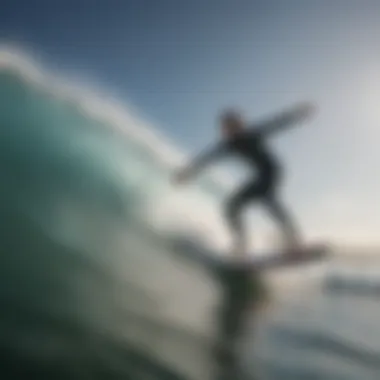
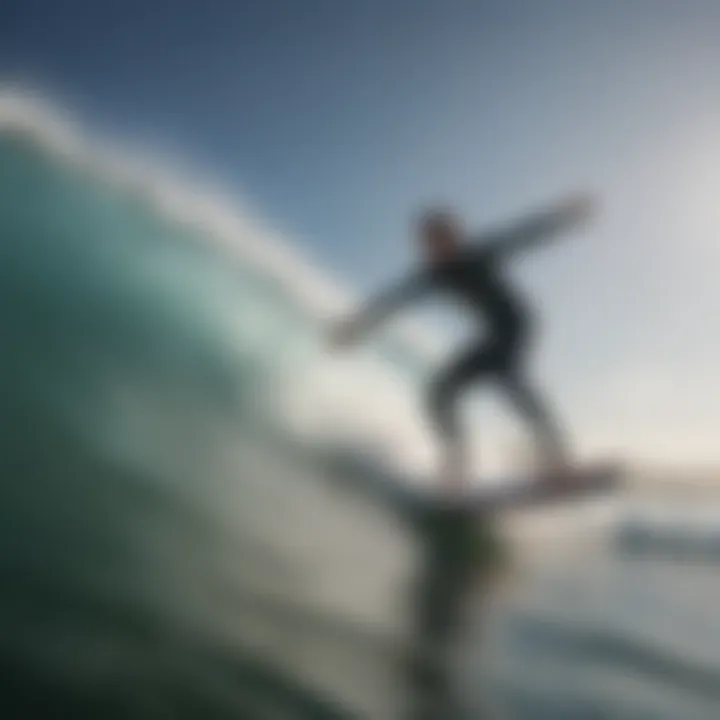
Mastering these fundamental sailing concepts is akin to learning the alphabet before you write a novel. Each piece plays a role in crafting a refined understanding of point-of-sail techniques crucial for all surf enthusiasts.
Primary Points of Sail
Understanding the primary points of sail is essential for surf enthusiasts who want to harness the wind effectively while riding the waves. Each point of sail represents a specific angle relative to the wind's direction, influencing how a surfer can maneuver and perform on their board. Grasping these concepts not only enhances control but also improves safety and enjoyment when navigating different surf conditions. It’s all about using nature’s forces to an advantage, making mastery over these points critical for any serious surfer.
Close-Hauled
When a surfer is positioned close-hauled, they are sailing as close to the wind as possible, typically at an angle of about 30-45 degrees from the wind. This technique demands precision and sharp focus. The sail is trimmed in tightly to maximize the lift, which is especially advantageous when catching waves.
Being in this position also enhances control, allowing surfers to navigate through unpredictable water currents while maintaining stability. Adjusting your body weight lower helps keep the board slick and responsive.
In essence, mastering close-hauled maneuverability translates into a significant skill for catching waves effectively while retaining speed.
Beam Reach
Reaching a beam reach means the wind is coming directly from the side, at a 90-degree angle. This position is widely considered one of the fastest and most powerful setups for surfers. When in a beam reach, surfers can lean into the wind, allowing for better speed and a more stable ride. The power from the wind fills the sail, transferring energy directly into movement across the water.
It’s vital during competitions or surf events to find this balance, as the least bit of adjustment can determine overall speed and performance. This position also opens up options for skilled aerial maneuvers, giving surfers the freedom to express their individual style on the waves.
Broad Reach
On a broad reach, the wind blows slightly behind the beam at around 135 degrees. While somewhat less powerful than a beam reach, this point of sail offers an exhilarating ride as you can use the wind's momentum to glide over the water. The sail should be let out more than in close-hauled sailing, allowing for a relaxed yet efficient flow. This position is quite forgiving, making it perfect for less experienced surfers to practice new tricks without fear of oversteering. The broad reach is where many find their groove, leading to seamless transitions between navigating and catching waves effortlessly.
Running
Running is when a surfer sails directly downwind. Here, the challenge is to maintain speed and control while managing the power of the wind in the sail. Casual surfers might feel most comfortable with this point, but there’s a fine line to walk. If too much wind fills the sail, it can cause loss of balance. Proper technique involves steering with intention; small adjustments can significantly affect speed and trajectory.
Moreover, being able to control your position while center of the wave can lead to thrilling rides as you ride the wave down to its endpoint. The key here is practice and understanding how to adjust both your body and sail to optimize performance, especially when approaching more powerful swells.
By recognizing the nuances of these primary points of sail, surfers can develop a well-rounded strategy for wave riding. Each point offers unique advantages and challenges, making familiarity with them imperative for anyone serious about their surf experience.
Navigating Different Conditions
Navigating different conditions is not just a matter of skill; it's an art that intertwines the sailor’s intuition with their technical knowledge of the sea. When surfers tackle waves, they often face an unpredictable mix of factors like wind, water swells, and even their own physical abilities. Understanding how to adjust to these varying conditions can be pivotal in enhancing performance and ensuring safety.
By recognizing your surroundings and adjusting your technique accordingly, you can maximize your time on the water. Here’s a closer look at how to navigate through calm waters, choppy seas, and windy conditions.
Calm Waters
Calm waters can feel like a dream for surfers. With gentle swells and less turbulence, it’s a prime time to hone your skills or practice new maneuvers. In such scenarios, here are a few pointers to keep in mind:
- Focus on Technique: With fewer challenges, turn your attention to perfecting your paddling and take-off stance.
- Experiment with Speed: Test different speeds to see how they affect your ride. Sometimes staying slow through a wave can lead to smoother transitions.
- Observe the Environment: Even in calm conditions, watch for changes in wind direction, as these can influence water behavior.
"In calm waters, a keen eye can spot the tiniest shifts that herald the next set of waves."
Choppy Seas
Choppy seas present their own set of challenges. The surface is less predictable, and the wind can whip things into a chaotic rhythm. If you find yourself surfing during such conditions, consider these strategies:
- Stay Low: Keeping a low center of gravity helps to maintain balance on your board when the waves are jarring.
- Read the Waves: Adjust your positioning based on the types of swells coming in. Paddling hard may be beneficial to catch fast waves.
- Position Strategically: Look for pockets of calmer water in between the choppiness to help alleviate some of the turbulence.
Surfers often find themselves tired quickly in these conditions, so conserving energy is key. Not every wave is worth chasing; it's sometimes wiser to pick your battles.
Windy Conditions
When the wind kicks up, the ocean’s surface can become a wild playground. Surfing in windy conditions requires alertness and adaptability. Here’s how to make the most out of a blustery day:
- Wind Direction Matters: Know whether the wind is onshore, offshore, or sideshore. Each can dramatically affect the wave quality.
- Adjust Your Approach: You may need to paddle harder against the wind; learn to angle your board effectively to cut through the waves.
- Utilize the Wind: On a windy day, consider using the wind to your advantage, perhaps by trying out aerial maneuvers if you're confident in your skills.
In summary, recognizing the nuances of different water conditions not only boosts your surfing technique but also promotes safety. Understanding these elements means better preparation and execution in every surfing session, whether you're dealing with glass-like surfaces or battling gusty winds.
Techniques for Mastering Points of Sail
Grasping the techniques for mastering points of sail is more than mere technical knowledge; it's about unlocking a deeper understanding of the dynamics at play when navigating the waves. For surfers who are also devoted to sailing, these skills enhance performance and greatly influence the enjoyment of one's time on the water. When you master these techniques, you’ll find yourself in greater control, better anticipating wave behavior, and ultimately achieving more successful rides.
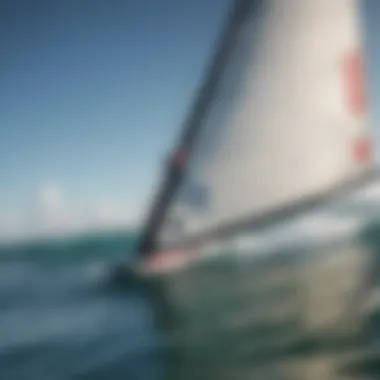
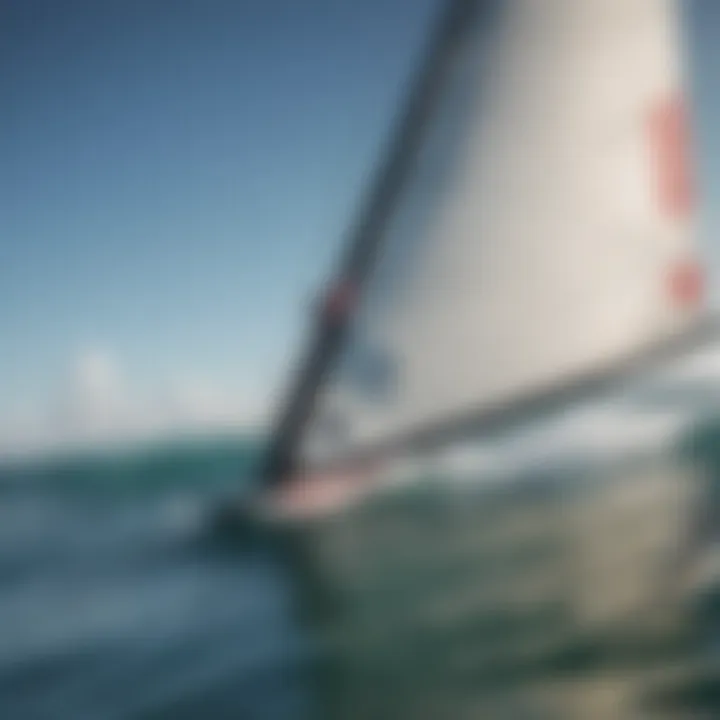
Trim Adjustments
Trim adjustments are crucial for optimizing sail efficiency. The term trim refers to how your sails are set relative to the wind. Getting this right can make the difference between a smooth ride and one that feels like a battle.
- Understanding Angle: Adjusting the angle of the sail can significantly impact speed and control. When the wind is blowing hard, you may want to ease the sail out a bit. Too tight, and you risk the sail behaving like a flat board.
- Sail Shape: Altering the trim also affects the shape of the sail, which directly influences how the wind flows over it. A fuller sail catches more wind and can help you accelerate while a flatter sail can enhance maneuverability.
- Practical Tips: It’s beneficial to familiarize yourself with your equipment. For example, when out on the water, continuously check if your sails appear to be luffing or too tight. Making small adjustments regularly might just be the key to staying on your game, especially when mastering points of sail.
“When you feel the wind in your sails, adjust like a maestro with a performance—precision leads to perfection.”
Tacking
Tacking is an essential maneuver that allows you to turn your boat while sailing into the wind. By managing this technique, you can navigate effectively regardless of wind direction.
- Timing Is Key: When transitioning, it's critical to time your movements, especially if you're face-first into the wind. You want to avoid losing momentum, so practice a smooth, coordinated effort in going through the tack.
- Weight Distribution: Shifting your body weight plays a major role. Leaning towards the bow when you’re heading into the wind can help keep the boat stable.
- Practice Makes Perfect: Consider practicing this maneuver in various wind conditions. After all, being comfortable in choppy waters is half the battle in understanding points of sail.
Gybing
Gybing contrasts tacking; it's the process of turning the boat with the wind coming from behind, and while it’s simpler, it carries its own challenges.
- Pre-emptive Action: Prepare your crew for the gybe; communicate your intent so everyone can ready themselves. This will minimize confusion and help everyone maintain their balance.
- Letting the Sail Fly: As you move through the gybe, let the sail go loose momentarily. Timing this release just right allows you to catch the wind on the opposite side quickly.
- Be Mindful of Your Surroundings: Similar to tacking, keeping an eye on other surfers or obstacles around you is critical. Good awareness can make the difference between a thrilling wave ride and an unexpected collision.
Overall, refining these techniques—tack, trim, and gybe—serves not only to elevate your surfing but also to deepen your appreciation for the art of riding the waves with skill.
Safety Considerations
Safety is not just a buzzword in the surfing world; it's the foundation on which enjoyable and successful surf experiences are built. Risks in the water, whether from the conditions or mismoored equipment, can escalate quickly, making awareness and preparation paramount for surfers. Focusing on safety ensures not only the well-being of the individuals, but it contributes to a considerate surfing culture where everyone can thrive.
Assessing Risk Factors
When evaluating surfing conditions, various factors impact safety. Before hitting the waves, one must consider:
- Wave Size and Shape: Larger waves might seem thrilling, but they can also bring serious dangers. Understanding the dynamics of how they break—whether clean or choppy—helps surfers choose a more suitable spot.
- Tides: The ocean is an ever-changing entity. High tides can affect the currents and wave patterns, while low tide may expose hidden dangers like rocks. Check the local tide charts regularly to avoid surprises.
- Wind Conditions: Wind plays a vital role in shaping waves. Offshore winds can create clean, surfable waves, while onshore winds tend to chop them up, influencing both the surfing experience and safety. Keeping an eye on these can help in making informed choices.
Surfers also need to be alert to the presence of other surfers or beach-goers. Crowded line-ups can lead to accidents, so maintaining awareness of one’s surroundings is crucial. A simple head-check can avoid collisions, ensuring a safer environment for all.
Emergency Protocols
Despite all precautions, accidents can happen, and being prepared can make all the difference. Establishing emergency protocols well before any incident occurs is advisable.
- Know Your Limits: Every surfer has their own skill level. Venturing into conditions that exceed that level is a recipe for disaster. Self-awareness is the first line of defense.
- Communicate: Before surf sessions, establish a system for communicating with fellow surfers or instructors. Hand signals can be invaluable when verbal communication fails amid crashing waves.
- First Aid Knowledge: Familiarity with basic first aid procedures, particularly those tailored to aquatic injuries, can save lives. Knowing how to treat cuts, bruises, or even how to respond to a bigger incident like a spinal injury is essential.
- Be Prepared for Emergencies: Bringing along a basic emergency kit that includes items like a whistle, a signaling mirror, or a leash cutter can provide essential support when things go sideways.
- Establish a Buddy System: Keep an eye on each other, especially in unfamiliar waters. Surfing with someone who shares a commitment to safety helps create a watchful environment.
"The ocean is unpredictable, but your approach to safety doesn't have to be. Prepare to enjoy, and respect the sea."
By incorporating these protocols and understanding risk factors, surfers of all skill levels can navigate the waters confidently and responsibly. Recognizing one's limits while maintaining awareness of environmental changes helps create a safer experience. With safety as a priority, surfing transforms from a high-risk sport into an engaging and exhilarating journey.
The Cultural Aspect of Sailing and Surfing
In the vibrant world of water sports, the cultural fit between sailing and surfing is a tapestry woven with shared experiences, values, and practices. This section explores the strong connections that exist among communities of surfers and sailors, highlighting how their traditions shape the identity of those who partake in these activities. Moreover, understanding these cultural nuances is essential for appreciating how both practices not only coexist but also influence one another in meaningful ways.
Surfing Communities and Traditions
Surfing, often viewed through the lens of individual expression, thrives within tight-knit communities that uphold traditions and foster lifelong friendships. The social fabric of these communities is grounded in shared rituals, from early morning sessions to post-surf gatherings where stories are swapped like trading cards. Places like the North Shore of Oahu or California's Malibu serve not just as surf spots but as cultural hubs where legends are born and legacies are celebrated.
- Local surf culture emphasizes respect for the ocean, knowledge of its moods, and camaraderie among surfers.
- Many communities celebrate local surf competitions, which not only highlight athletic prowess but also strengthen community bonds.
- Knowledge transfer, where seasoned surfers teach newcomers the ropes, ensures that traditions endure through generations.
Additionally, the art of storytelling plays a significant role in these communities. Surfers recount daring rides, the rush of catching that perfect wave, or even close calls with nature. These narratives serve to educate and inspire newcomers, fostering a culture of mentorship within the community.
Environmental Responsibility
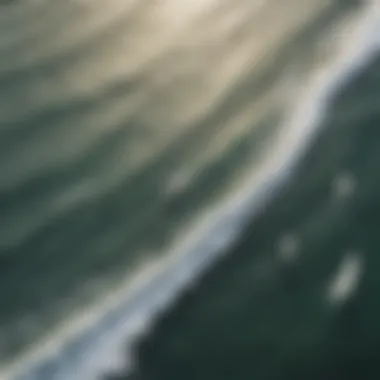
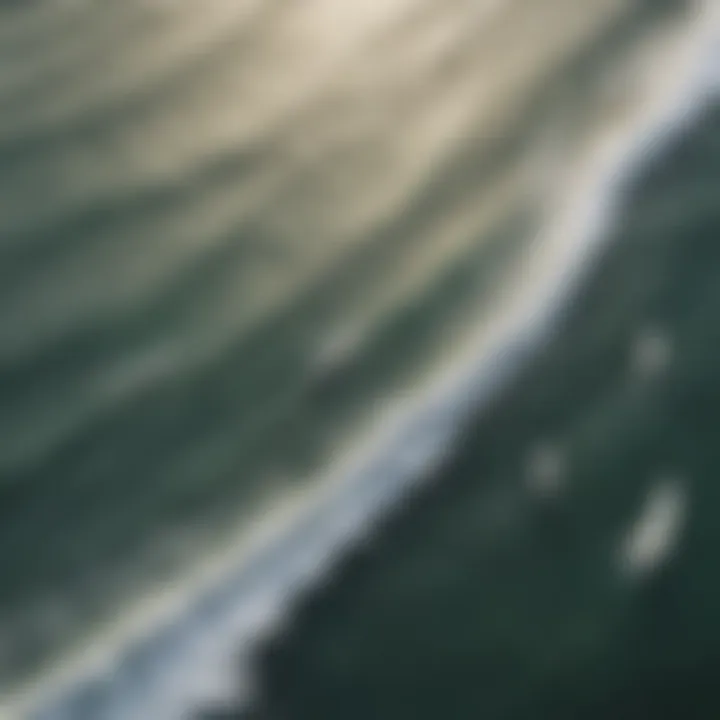
As custodians of the elements they embrace, surfers are uniquely positioned to champion environmental responsibility. The very essence of surfing is intertwined with nature, which makes engaging in sustainable practices not just a choice but a necessity. This aspect of surf culture resonates deeply, as surfers are often the first to witness the changing tides and currents caused by climate change and pollution.
- Practicing sustainability within surfing communities can include:
- Participating in beach clean-ups to protect the environments they enjoy.
- Advocating for eco-friendly products, such as biodegradable surf wax or sustainable surfboards made from recycled materials.
- Educating fellow surfers about responsible waste management while at the beach.
"The ocean is a living entity, and to surf is to be honored by its presence. It is our responsibility to protect this realm for future generations."
Moreover, surfers frequently collaborate with conservation organizations, amplifying their voices on pressing environmental issues. Community efforts often extend beyond the local beach, advocating for global action on climate change. In this sense, the cultural aspect of surfing transcends personal enjoyment; it becomes a movement towards safeguarding the planet.
In summary, the cultural interplay between surfing and sailing is rich with traditions and mutual respect for the ocean. The communal bonds fostered through stories and shared experiences contribute to a legacy that inspires new generations of water lovers to uphold these traditions while advocating for environmental responsibility.
Case Studies: Successful Navigation
Delving into the real-life experiences of surfers offers invaluable insights into successful navigation techniques on the water. The importance of examining the stories of seasoned surfers cannot be overstated. By analyzing how they tackle varying sea conditions and harness their understanding of points of sail, other surfers can learn practical skills that can enhance their performance. Case studies connect theory with practice, revealing not just methods but also the thought processes behind critical decision-making.
One of the primary benefits of studying successful navigation is the ability to glean tactical insights that are often overlooked in traditional instruction. Rather than rote learning, surfers can appreciate the nuance of adapting techniques based on conditions such as tide changes, wind shifts, and the nature of the waves.
Innovative Techniques from Experienced Surfers
Experienced surfers often utilize a variety of techniques that set them apart from newcomers. One innovative approach to mastering points of sail is the "wind shadow" technique. This involves intentionally positioning oneself in the lee of the wave before catching the optimal wind to propel after a surf. Surfers like Jamie O’Brien incorporate observation of both wind direction and wave formation into their style, allowing them to seize the right moment and direction for a successful ride.
Another common savvy tactic is called "sailing past the break". This is when surfers aim for a point slightly beyond the immediate wave action to catch a broader swell. By doing this, they can increase their speed as they approach the breaking wave while maximizing lift from their sails. Surfers who have honed this technique praise the freedom and control it affords, coupled with the exhilarating challenge of navigating the surf in this manner.
A few key techniques to note include:
- Adjusting Body Weight: Keeping a lower center of gravity can improve stability and control.
- Wind Angle Understanding: Knowing how acute angles can influence speed and maneuverability.
- Catch and Control: Developing the timing to catch the wave at the right moment leads to more proficient rides.
"Technique alone won’t carry you far; it’s about understanding the interplay of wind and water that makes a great surfer."
Analysis of Popular Surf Spots
When we look at popular surf spots like Pipeline in Hawaii and Teahupo'o in Tahiti, the need for effective navigation skills becomes crystal clear. Each location poses unique challenges influenced by wind patterns and wave structures.
For instance, Pipeline is notorious for its hollow waves, which demand acute awareness of one's position relative to both the wave and wind direction. Surfers at Pipeline have reported that understanding how points of sail interact with the wave structure can make a distinct difference.
Teahupo'o, on the other hand, presents a different challenge due to its heavy reef breaks. Here, proficient surfers utilize local wind knowledge to time their entries. They also adjust their approach to catch the wave under varying conditions, showcasing a blend of instinct and learned navigation strategies.
Here are some considerations when analyzing these spots for navigation:
- Local Wind Patterns: Understanding seasonal shifts and unique wind actions is crucial.
- Wave Timing: Engaging with the swell at the right moment enhances ride quality.
- Environmental Variables: Constantly assessing conditions can make the difference between a successful or a mishap ride.
By recognizing the interplay between factors such as conditions, techniques, and surf spots, surfers can build a more comprehensive understanding that drives improvement in their own surfing skills.
Finale
In the realm of surfing, mastering points of sail is not just a theoretical exercise—it's a vital component that elevates a surfer's experience and effectiveness in the waves. This article has traversed the intricate relationship between sail orientation and surfing prowess, highlighting crucial elements that span from foundational concepts to expert techniques. Understanding how to maneuver effectively can make a significant difference when navigating different wave conditions.
Synthesis of Key Points
Throughout this exploration, several key takeaways can be distilled:
- Points of Sail Influence Performance: The alignment of sails relative to the wind not only affects sailing but is also paramount in surfing. Surfers who grasp these dynamics can harness the wind to their advantage.
- Environmental Awareness: An acute awareness of surrounding conditions—varying from calm to turbulent waters—ensures decision-making that maximizes safety and enjoyment.
- Techniques Matter: Mastering tacking and gybing ain’t just for sailors. These techniques directly apply to the surfing world, enabling smooth transitions and efficient navigation.
"As the wind shifts, so too must the surfer’s strategy." This quotation resonates with the ever-evolving nature of both sailing and surfboarding; adaptability is essential for success.
- Cultural Significance: The article points out the deep-rooted traditions within surfing communities, and the responsibility surfers have toward the environment, interweaving culture with sport.
Future Trends in Surfboarding and Sailing
Looking ahead, several trends may impact the future of both surfing and sailing, enhancing how enthusiasts approach the ocean:
- Technology Integration: As tech continues to permeate every aspect of life, innovations such as smart sails or sensors that detect wind patterns could fundamentally change sailing tactics and surfing techniques.
- Sustainability Initiatives: Increased emphasis on eco-friendly practices will likely shape surfing communities, urging surfers to adopt more sustainable practices in line with the desire to protect marine ecosystems.
- Cross-Training Techniques: With the crossover between disciplines becoming more apparent, expect an increase in training regimens that blend sailing skills with surfing maneuvers. This helps in refining movements and improving overall watercraft proficiency.















